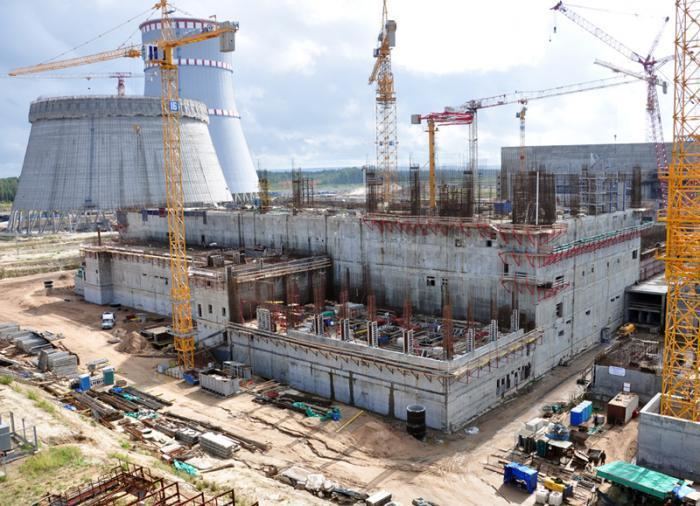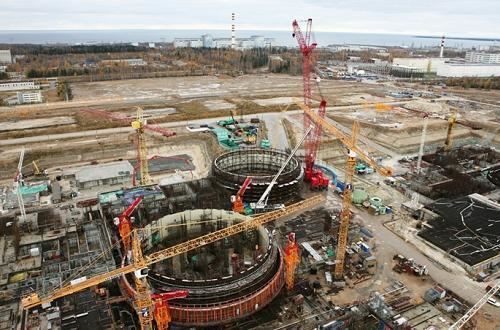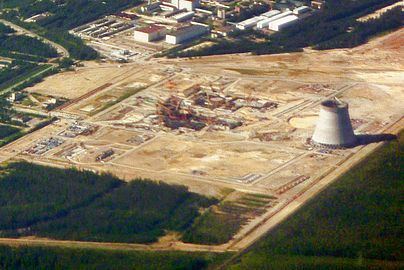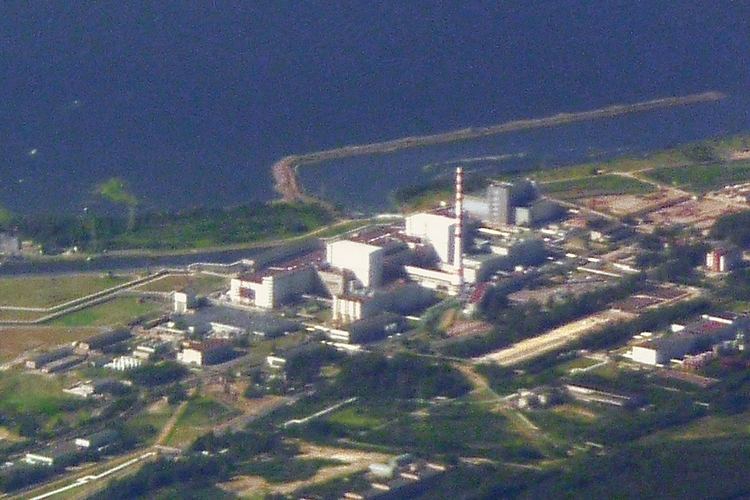Country Russia Decommission date 2016 | Status Operational | |
 | ||
Construction began 1 March 1970 (Leningrad Nuclear Power Plant I)25 October 2008 (Leningrad Nuclear Power Plant II) | ||
Leningrad nuclear power plant e7
Leningrad Nuclear Power Plant (Russian: Ленинградская атомная электростанция; Ленинградская АЭС ( pronunciation )) is a nuclear power plant located in the town of Sosnovy Bor in Russia's Leningrad Oblast, on the southern shore of the Gulf of Finland, some 70 kilometres (43 mi) to the west of the city centre of Saint Petersburg. It consists of four nuclear reactors of the RBMK-1000 type. These reactors are similar to reactors No. 1 and 2 of the Chernobyl Nuclear Power Plant. Two units of the VVER-1200 type are under construction at Power Plant II to replace the current RBMK reactors when they reach the end of their service lives.
Contents
- Leningrad nuclear power plant e7
- Leningrad nuclear power plant russia
- Incidents and accidents
- References

On 25 October 2008, Saint Petersburg Atomenergoproekt began concreting the foundation plate of the reactor building of the Leningrad Nuclear Power Plant II, Unit 1. Cost of the project is estimated to be almost 70 billion Russian ruble (RUR). A construction licence was issued on 22 July 2009.

From May 2012 to December 2013, Unit 1 was offline while repairs were made related to some deformed graphite moderator blocks.

Leningrad nuclear power plant russia
Incidents and accidents

The first accident at the plant occurred shortly after the first unit came online. On 7 January 1975 a concrete tank containing radioactive gases from Unit 1 exploded; there were no reported accident victims or radiation releases.

Less than one month later, on 6 February 1975, the secondary cooling circuit of Unit 1 ruptured, releasing contaminated water into the environment. Three people were killed, and the accident was not reported in the media.

On 28 November 1975 a fuel channel in Unit 1 suffered a loss of coolant, resulting in the degradation of a nuclear fuel assembly that led to a significant release of radiation lasting for one month. Immediately after the accident, the radiation level in Sosnovy Bor, 5 kilometres (3.1 mi) from the affected power unit, was 600 mR/h; in total, 1.5 MCi was released into the environment. The exposed inhabitants of the Baltic region were not notified of the danger. The accident was not reported in the media. (Practically the same accident occurred in Unit 1 of the Chernobyl Power Station in 1982.)
In July 1976 and again in September 1979, due to a poor safety culture, fire broke out in a concrete vault containing radioactive waste. Water used in extinguishing the fires was contaminated, leaked into the environment, and entered the water table. This was not reported in the media.
On 28 December 1990, during refurbishment of Unit 1, it was noticed that the space between the fuel channels and the graphite stack (contaminated during the 1975 accident) had widened. The contaminated graphite was spilled, and the radiation levels in the space under the reactor increased. Radiation was detected 6 km away from the unit, but this was not reported in the media.
On 3 December 1991, due to faulty equipment and lax safety rule compliance, 10 new fuel rods were dropped and damaged. The staff tried to conceal the accident from the management.
In March 1992, an accident at the Sosnovy Bor nuclear plant leaked radioactive gases and iodine into the air through a ruptured fuel channel. This was the first accident at the station that was announced in the news media.
On 22 February 1994 a pipe weld failed, and water and steam were ejected into the environment from the ventilation stack. Radiation levels increased by a factor of 10. This was not reported by the media.
In January 1996 a leak of radioactive water from a spent-fuel building was discovered, escaping at a rate of 12 L per day. By March 1997 the daily leakage had increased to 360 L. Finnish specialists helped to greatly reduce the leakage.
On 28 May 2000, at the first power unit, a piece of rubber "left behind" after maintenance blocked the coolant (water) circulation in a nuclear fuel channel (which contains both the fuel rods and coolant). This was detected at reactor start-up, or the accident would have followed the scenarios of 1975 and 1992.
On 19 October 2000, in the spent fuel storage facility, a leak of radioactive water was found. The contaminated soil (about 1.5 t) was transferred into solid radioactive waste storage.
In December 2005, a private company reprocessing scrap metal at the facility was operating a non-nuclear smelter, which overheated and exploded, spraying molten metal across a large area and starting several fires. Three workers were burned in the explosion, with two experiencing burns over 90 percent of their bodies.
On 27 August 2009, the third unit was stopped when a hole was found in the discharge header of a pump. According to the automated radiation control system, the radiation situation at the plant and in its 30-kilometre (19 mi) monitoring zone was normal. The plant's management refuted rumors of an accident and stated that the third unit was stopped for a "short-term unscheduled maintenance", with a restart scheduled for 31 August 2009.
The plant has agreed to report on all incidents that threaten the safety of the environment to neighbouring Finnish authorities. When asked to report on other incidents as well, the plant answered negatively, stating that they have so many daily incidents that their whole time would be wasted in filling out incident reports.
On 19 December 2015, unit 2 was stopped (scrammed) due to a broken steam pipe. Some media reported about radioactive-contaminated steam that might have been released in the atmosphere, however this was proven to be false. Incident level was assessed as level 0. No threats for personnel and residents were found. 40 square meters of compartment where the incident occurred were isolated and checked. The situation inside Leningrad Nuclear Power Plant and the industrial area around the station has not changed and the radiation level remains within the limits of natural background values.
